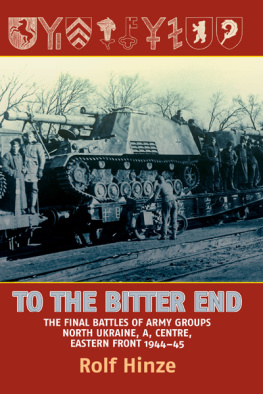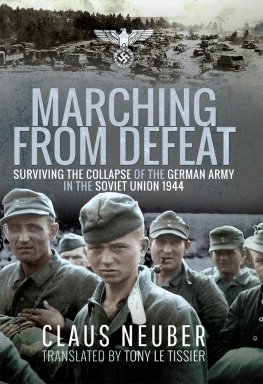First published in this format in Great Britain in 2016 by
PEN AND SWORD MILITARY
An imprint of
Pen & Sword Books Ltd
47 Church Street, Barnsley
South Yorkshire
S70 2AS
Copyright Ian Baxter, 2016
ISBN: 978 1 47382 267 2
PDF ISBN: 978 1 47388 035 1
EPUB ISBN: 978 1 47388 034 4
PRC ISBN: 978 1 47388 033 7
The right of Ian Baxter to be identified as Author of this work has been asserted by him in accordance with the Copyright, Designs and Patents Act 1988.
A CIP catalogue record for this book is available from the British Library
All rights reserved. No part of this book may be reproduced or transmitted in any form or by any means, electronic or mechanical including photocopying, recording or by any information storage and retrieval system, without permission from the Publisher in writing.
Printed and bound in England
By CPI Group (UK) Ltd, Croydon, CR0 4YY
Pen & Sword Books Ltd incorporates the Imprints of Pen & Sword Aviation, Pen & Sword Family History, Pen & Sword Maritime, Pen & Sword Military, Pen & Sword Discovery, Pen & Sword Politics, Pen & Sword Atlas, Pen & Sword Archaeology, Wharncliffe Local History, Leo Cooper, Wharncliffe True Crime, Wharncliffe Transport, Pen & Sword Select, Pen & Sword Military Classics, The Praetorian Press, Claymore Press, Remember When, Seaforth Publishing and Frontline Publishing
For a complete list of Pen & Sword titles please contact
PEN & SWORD BOOKS LIMITED
47 Church Street, Barnsley, South Yorkshire, S70 2AS, England
E-mail:
Website: www.pen-and-sword.co.uk
Contents
Chapter 1
Summer & Winter Battles 1943
In July 1943, the German Army launched what proved to be its last great offensive on the Eastern Front against the Kursk salient. Despite massive losses sustained by their forces at Stalingrad, which led to the subsequent destruction of the 6th Army, Hitler was determined as ever not to give up the fight in Russia. It was here at Kursk that the Fhrer was confronted with a very tempting strategic opportunity that he was convinced could yield him victory. Within the huge salient, measuring some 120 miles wide and 75 miles deep, he tried to persuade his generals that his forces could attack from the north and south of the salient in a huge pincer movement and encircle the Red Army. In Hitlers view, the offensive, codenamed Zitadelle, would be the greatest armoured battle ever won by both the German Army and Waffen-SS. As with the opening phases of Barbarossa in June 1941, a confident Hitler had predicted that he only had to kick in the front door and the whole rotten edifice would come crashing down. Despite Hitlers confidence, the German generals were not blind to the great difficulties facing them at Kursk. In fact, a number of them were concerned at the enemys growing strength. Intelligence had already confirmed that the Red Army had constructed a number of major defensive belts, each of which were subdivided into two or even three layers of almost impregnable strongholds. Although there were no accurate figures, these Soviet belts were some 150 miles deep. Each belt consisted of many anti-tank strong points and an extensive network of obstacles with a maze of intricate blockhouses and trenches. The Russian soldiers that were dug-in along these belts were well camouflaged and heavily armed with plenty of provisions to sustain them during long contact with the enemy. For three long months the Red Army had been prepared for the German attack. Improved intelligence had allowed Russian commanders to predict exactly the strategic focal point of the German attack. It was this combined collection of battlefield intelligence that proved that Zitadelle was doomed to failure even before it had begun. The German Army were determined to rejuvenate their Blitzkrieg tactics, but the immense preparations that had gone into constructing the Soviet defences meant that the Germans were never going to succeed in penetrating deeply into the Red Army fortifications.
The battle of the Kursk was probably the first modern Soviet operation of the war. Despite the fact that the Red Army lacked the technological superiority of individual weapons, they had a well-prepared defensive programme, which included elaborate deception plans to confuse the enemy.
During the early morning of 5 July 1943, the long awaited battle began in earnest with the Germans unleashing one of their largest artillery bombardments of the war. In fact, the bombardment was so intense that in no less than one hour the Germans had hurled more shells than they had used in both Poland and the Western Campaign put together. Once the bombardments had subsided German ground attacks were ordered forward into action. Their objective was to break through the Kursk-Orel highway and railway and then drive southwards to Kursk. In order to reduce the vulnerability of the armoured vehicles that were to achieve this ambitious advance, General Walter Model, commander of the 9th Army, insisted that dismounted infantry accompany his armoured vehicles. Although Models tactics helped reduce tank losses on the first morning, it was at the expense of massive infantry casualties. During the rest of the first day the German 9th Army fell far short of its objectives, due to the fact that the Soviet Central Front had correctly anticipated the attack sector. Attacking on a 25-mile-wide front, the Germans found themselves trapped in the huge defensive minefields, and desperately called upon engineering units to clear them under artillery fire. Although engineering units were able to clear some of the mines, they were generally unsuccessful. As a consequence German losses in the Soviet minefields were massive.
All over the German northern front troops tried their best to push forward under relentless Russian fire. To the German soldier in this battle, it was unlike any other engagement they had previously encountered. The Russians constantly strengthened their defences through reinforcement, skilfully deploying mobile armour and anti-tank reserves to compensate for their high losses.
Within twenty-four hours of the initial attack the 9th Armys 25-mile front had been reduced to some 20 miles. By 7 July this dropped to around 8 miles wide, and the following day only less than a mile. Not only had the front shrunk, but the depth of the German attack had been significantly reduced. By 10 July, through sheer weight of Soviet strength and stubborn combat, German mobile units of the 9th Army were finally forced to a standstill and were fighting for their lives. Everything that could go wrong for the German 9th Army had been played out on the blood-soaked plains of Kursk.
After a week of the attack the German Army had only moved some eight miles. On 12 July this prompted the Red Army to launch their offensive against the 2nd Army at Orel. With all their might they began to pulverise the German positions into the ground. The 9th Army were now compelled to withdraw or face total annihilation. Human casualties were huge, as were losses in equipment. The German Panzer divisions had lost some 300 of their trusted Pz.Kpfw.III & IVs, half a dozen Tiger Is and 50 tank destroyers.
While the northern front was continuously hampered by strong enemy resistance, in the south of the salient the Voronezh Front fared less well against the German Army and its elite SS counterparts of the II SS Panzer Corps. These units of Army Group South were very powerful and consisted of an immense phalanx of armour. One of the most powerful armoured forces consisted of Hoths 4th Panzer Army. This armoured force had achieved remarkable progress on the first day of the attack and had successfully forced its way forward through strong Russian defences. By 6 July it had smashed its way through Red Army lines and radioed that the advanced elements were some nine miles beyond their start lines. Along the rest of the southern front other German forces were making equally good progress against the Red Army. But as in the north, attack frontages and penetration depth were reduced as the attack proceeded. Consequently within three days the front had been reduced from a 16 mile front to 1 miles. Yet again the Russians had heroically held their positions to the last man. The many thousands of mines and artillery pieces were again successful in delaying the German attack and inflicting appalling losses on the Germans. Across threatened sectors of the front where German forces seemed to penetrate areas more deeply the Russians quickly brought up additional stocks of mines. Over 90,000 of these mines alone were laid during the battle by small mobile groups of engineers at night. Once again the Germans fell victim to the mines. Within five days of heavy fighting many German units had lost immeasurable amounts of men and equipment. The elite Grodeutschland Division for instance, which began the battle with 118 tanks, only had 3 Tigers, 6 Panthers, and 11 Pz.Kpfw.III and IV tanks left operational. The XLVIII Panzer Corps reported, overall, 38 Panthers operational with 131 awaiting repair, out of the 200 it started with on 5 July.
Next page
















